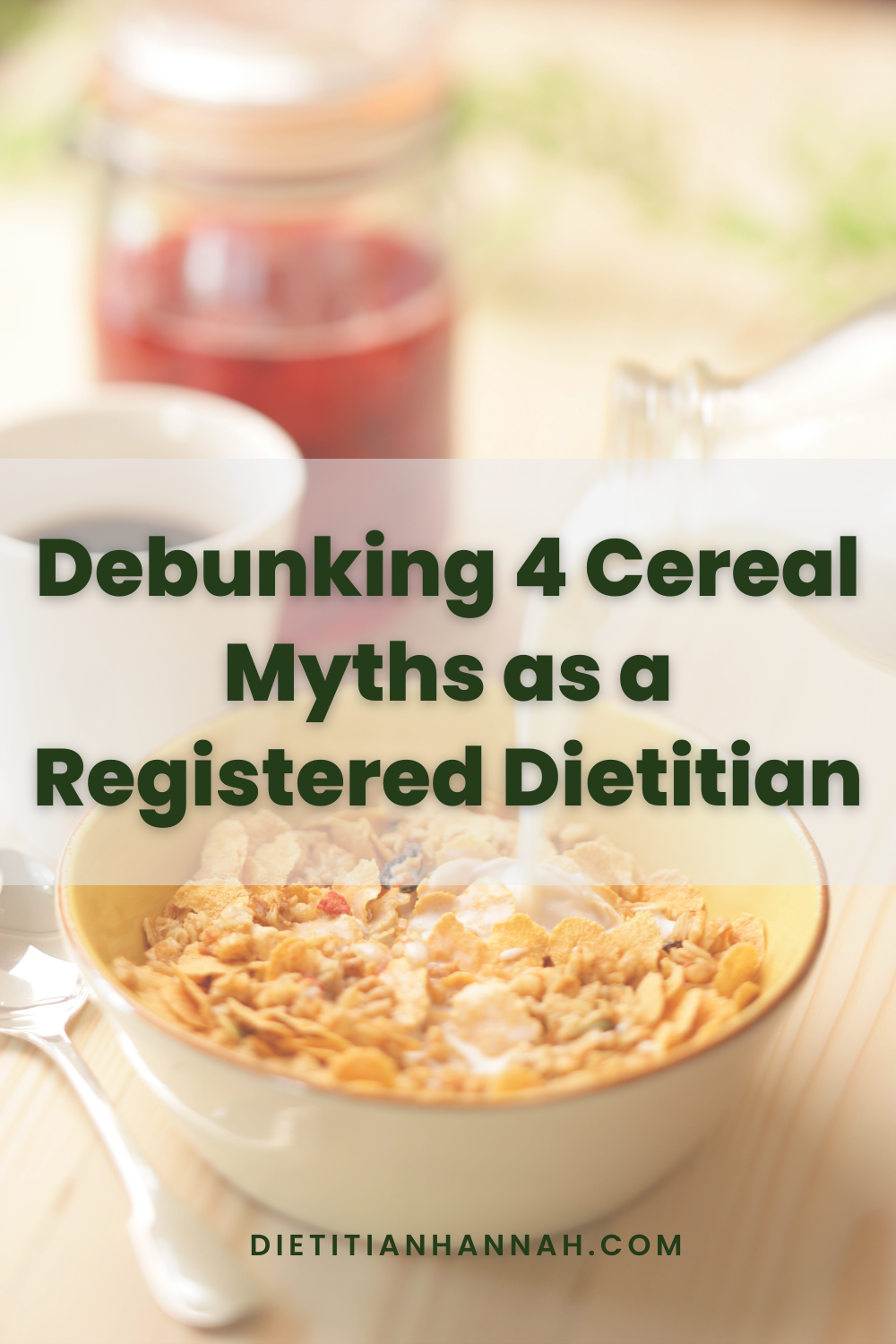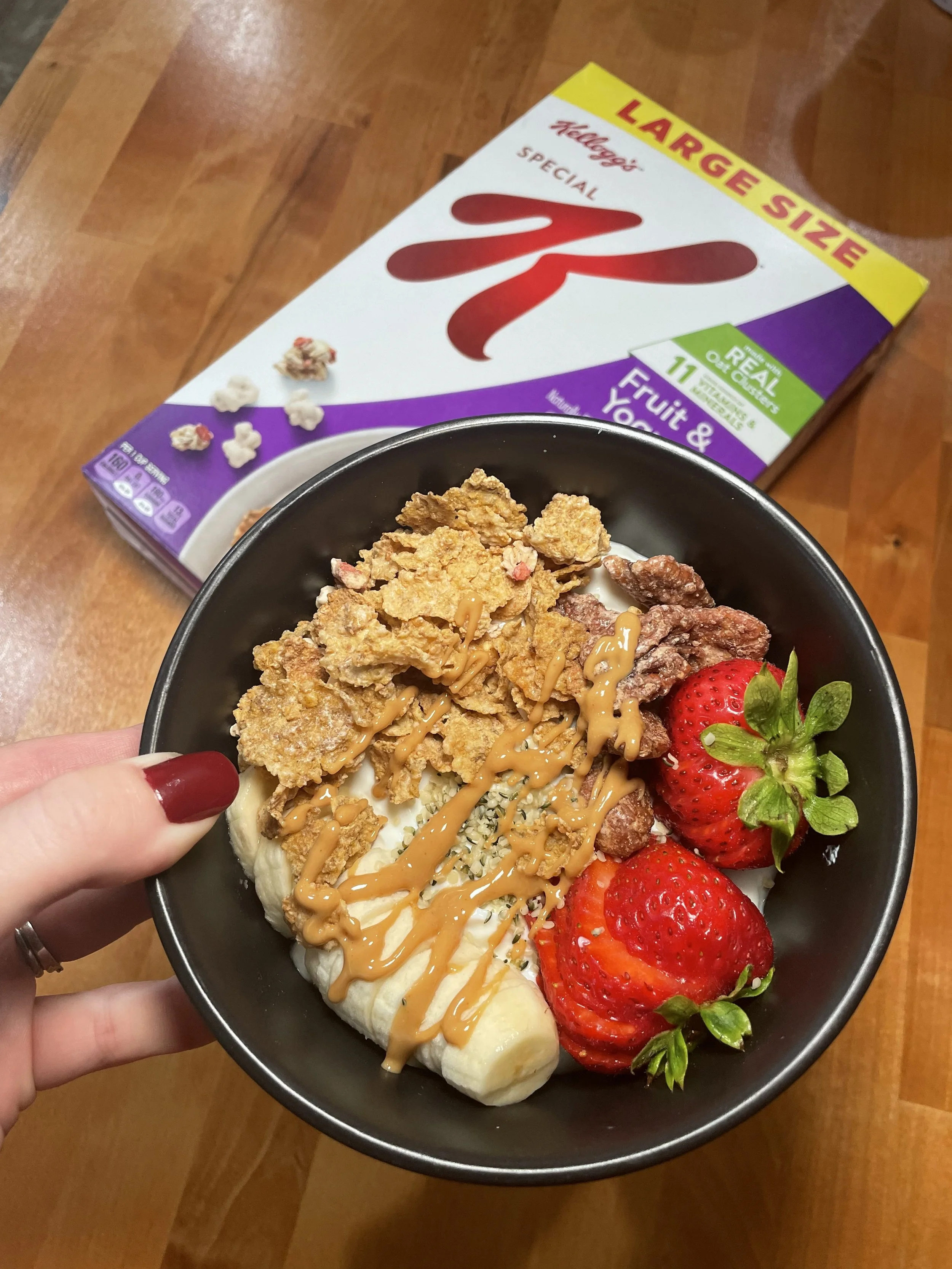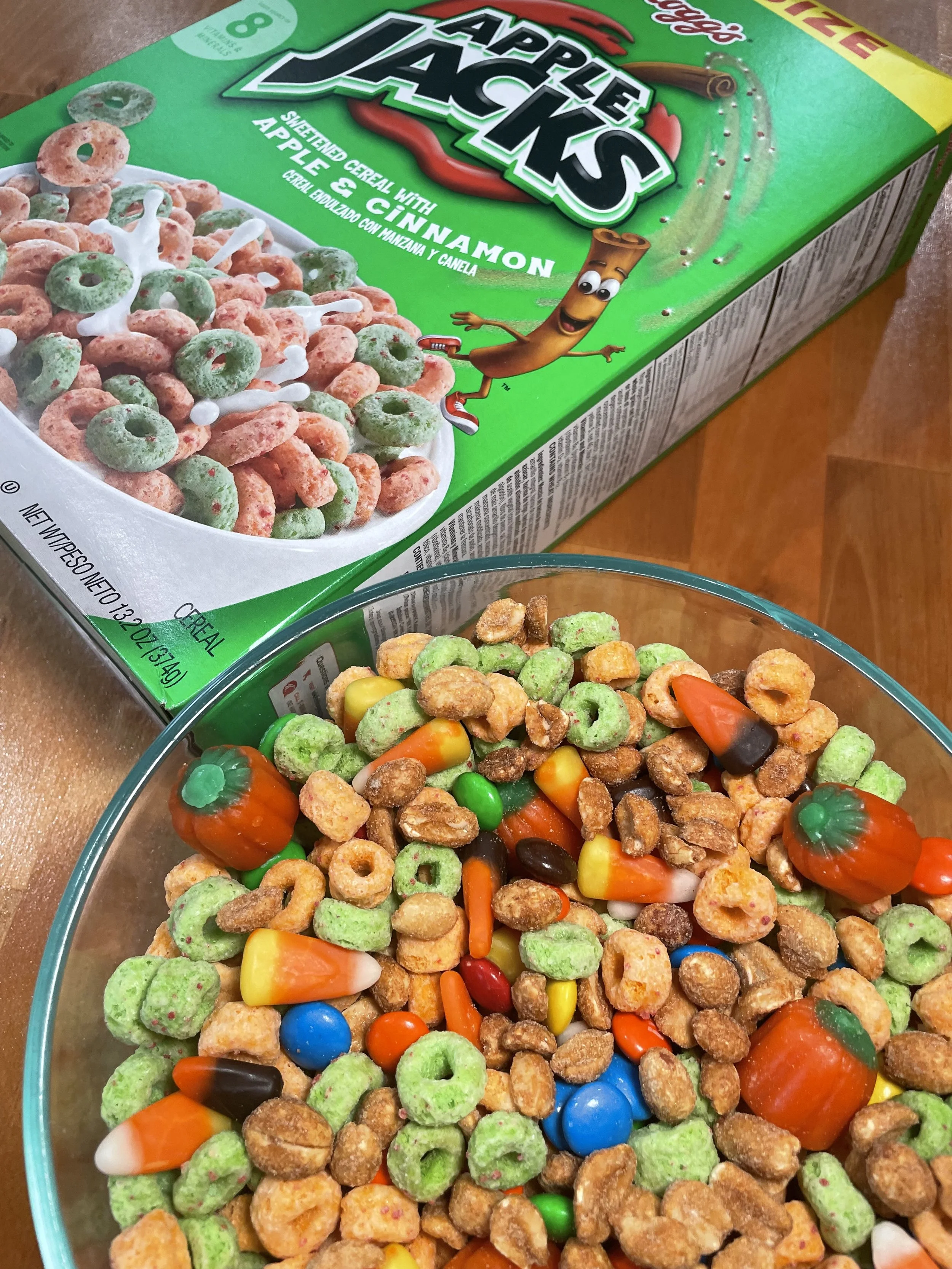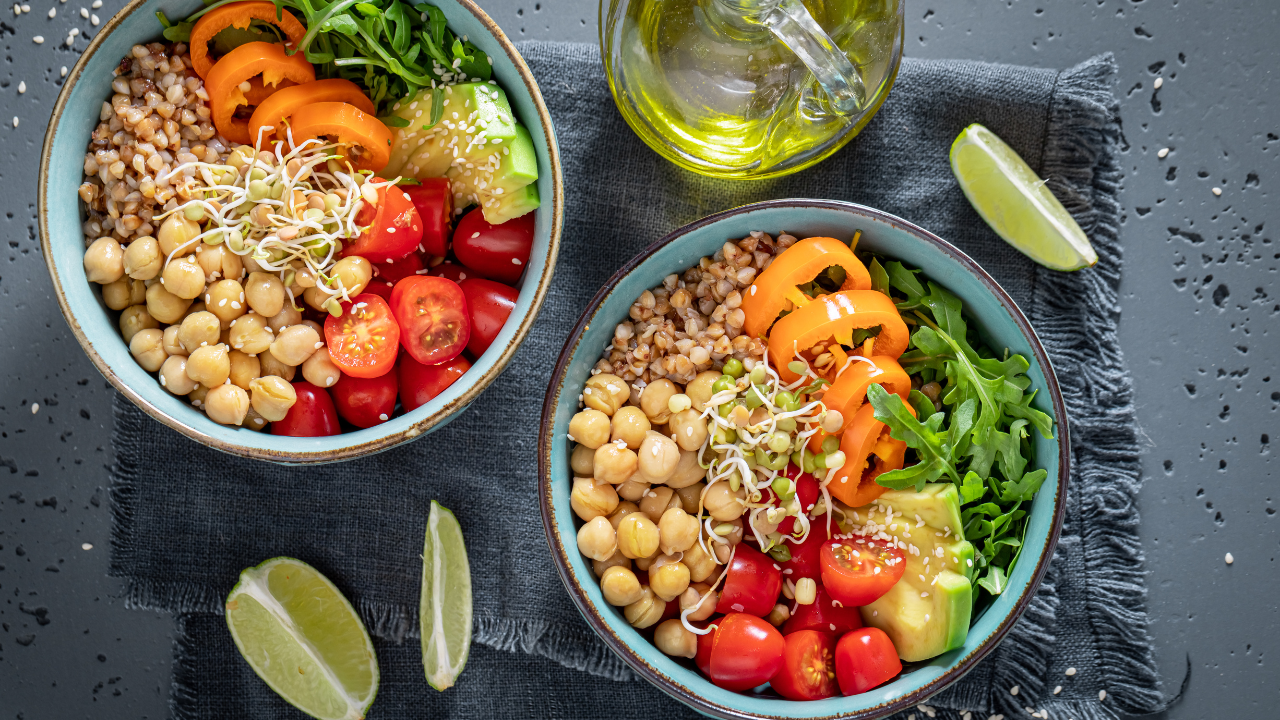Debunking 4 Cereal Myths as a Registered Dietitian
This sponsored post was written in collaboration with Best Food Facts (BFF) (powered by The Center for Food Integrity (CFI)) and WK Kellogg Co (WKKC). All opinions are my own. I recently joined the “Build Your Best Bowls” challenge featuring Kellogg’s cereals to explore new research on consumer cereal habits as well as emerging nutrition science behind our favorite ready-to-eat cereals. Read on to learn how cereal can be a part of a balanced diet and healthy lifestyle.
There is a reason why cereal is a popular breakfast food. Cereal is tasty, convenient, and stocked in many grocery stores. But lately, the general public has become skeptical of their love for cereal. Is it healthy? What about all this talk of processed foods? Does cereal have too much added sugar?
In this post, I will debunk four common cereal myths as well as provide some dietitian-approved ways for you to fill up your bowl.
Myth #1: Cereal is just “empty calories”
Most cereals are composed largely of carbohydrates, which may explain some of the recent cereal skepticism from consumers. There is a great deal of misinformation out there regarding carbohydrates and carbohydrate-rich foods are sometimes referred to as “empty calories”. But carbs are an essential nutrient that we need plenty of each day! There is nothing “empty” about a food that gives our body nourishment.
@dietitianhannah I’m excited to partner with Best Food Facts and Kellogg's® Cereal to bring you this content. #sponsored ♬ original sound - Dietitian Hannah
Along with carbohydrates like fiber, cereals contain a wide variety of other nutrients, including protein, and essential vitamins and minerals. And here’s a fun fact - cereal eaters actually get more key nutrients like vitamin D, calcium, fiber, iron, and folate than those who don’t consume cereal. This is because cereal on its own provides these nutrients, and also because cereal is often consumed with other nutrient-dense foods such as milk, nuts, and fruit. I love cereal because it is a blank canvas for nutrition addition. As a dietitian, I am a huge fan of this concept of nutrition by addition, which involves eating foods you love and adding to them for even more nutrition benefits. So not only is cereal nutrient-dense on its own, but it is also very customizable.
No matter what you are looking for in a cereal, there is one that can meet your dietary needs and goals. Kellogg’s® has high-fiber options, cereals with simple ingredients and single digit or no added sugar, as well as innovative cereals with 10+ grams of protein per serving.
Myth #2: Cereal has too much sugar
The World Health Organization (WHO) and the Dietary Guidelines for Americans (DGA) recommend that less than 10% of our calorie intake come from added sugars. Surprisingly to many, adults who meet this recommendation actually have the highest cereal consumption. And adults who do not eat breakfast consume more added sugar per day than those who have cereal for breakfast. In other words, cereal likely isn’t going to be the cause of excessive added sugar intake, and with a little bit of sweet that is added comes with a whole lot of key nutrients.
I recommend considering your overall eating patterns rather than worrying about villainizing individual foods or ingredients. Eating a wide variety of foods, which may include a bit of added sugar, is going to be a much more sustainable approach to overall health than nitpicking single ingredients or nutrients.
Myth #3: You shouldn’t eat cereal because it is processed
Processed foods have been all the buzz lately, especially processed foods (or UPFs). UPFs are foods that are formulated for shelf life and/or palatability. Food processing is a broad spectrum.
As for cereal, generally Kellogg’s® has ready-to-eat options that are simpler than you might think and that processing helps make food edible and accessible. Nothing scary about that!
Source: WKKC
Processed foods serve many purposes, including keeping humans fed and nourished. In 1941, the National Academy of Sciences began issuing Recommended Dietary Allowances (RDAs), which are the “quantity of nutrients a person needs to consume daily to ensure basic good health, proper growth and reproductive success, and to prevent nutrient deficiency diseases.” Basically, the RDAs tell us how much of a nutrient that we need.
One way that processed foods help us meet the RDAs is through enrichment and fortification. Food fortification became commonplace during the First and Second World Wars to help prevent nutritional deficiencies and replace nutrients that were lost during food processing. Once common nutrient deficiencies have been virtually eliminated in the US thanks to enrichment of refined grains and other public health fortification strategies, like cereal.
The bottom line - there is room for both processed foods and whole foods on your plate (or in your bowl). As a registered dietitian, I can totally empathize with people who want to make the healthiest food choices for themselves and their families. And the great thing is, processed foods (including cereal) can be a healthy choice!
Myth #4: It is better to skip breakfast than to eat cereal
I strongly disagree, and I have the facts to back it up. Key findings from this article show that ready-to-eat cereal consumers had lower intakes of total fat and higher intakes of dietary fiber and micronutrients. Ready-to-eat cereal consumers had more favorable nutrient intake profiles and adiposity indexes than breakfast skippers or other breakfast consumers in US children/adolescents.
Think of it this way - if you are eating breakfast each day along with other balanced meals and snacks, you are much more likely to meet your nutrition needs than breakfast skippers. Breakfast is a great opportunity to get some powerful nutrition in!
Skipping breakfast can lead to excessive hunger later in the day and possibly result in over-eating as your body plays catch-up. After all, you likely just fasted all night while you were asleep. Your body needs some fuel in the morning!
As we’ve discussed, cereal can be a great way to add nutrition to your diet. If you are wanting to incorporate cereal into your mornings (or any other time of day), I share my dietitian-approved cereal-eating tips below.
How to Build Your Best Cereal Bowl
My “Best Cereal Bowl” will always include a source of protein, fiber, and certain fats. There are endless ways that this principle can be mixed-and-matched. Even when standing alone, many Kellogg’s® cereals are good sources of protein and fiber. Add in a source of dairy such as milk or yogurt, and you’ve got yourself a balanced meal or snack!
Sometimes I like to take it a step further beyond the classic bowl of cereal and milk. Here are a couple of recipes that you can try for yourself.
Fully Loaded Cereal Bowl:
Kellogg’s® cereal of choice
Milk or Greek yogurt
Mix with a protein powder for a protein boost
Fruit of choice
Mixed berries
Sliced banana
Dried fruit
Nuts/seeds of choice
Pumpkin seeds
Hemp hearts
Chia seeds
Flax seeds
Chopped walnuts, pecans and/or peanuts
Nut butter
Harvest Snack Mix
Kellogg’s® Apple Jacks®
Pretzels
Cone-shaped corn snacks
Candy corn
Candied pecans or peanuts
Peanut butter or chocolate candies
Disclaimer: this post is for informational and educational purposes only and is not a substitute for professional medical advice.


































